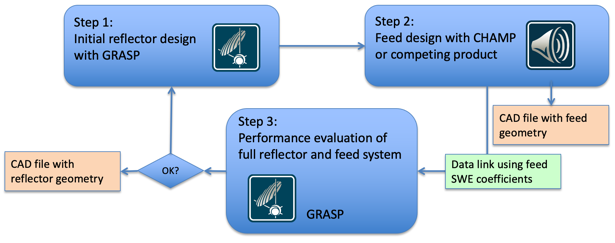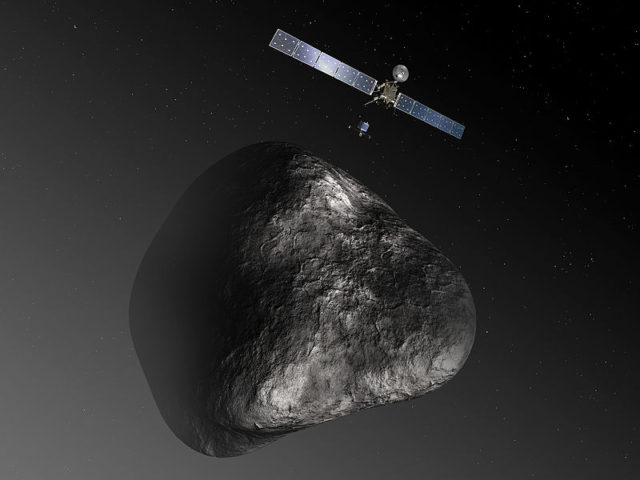LATEST NEWS
December 21, 2025 • 17:53
December 16, 2025 • 09:42
December 16, 2025 • 09:26
December 10, 2025 • 14:28
December 3, 2025 • 11:07
26 Jan 2021
Reflector antennas are by far the most used technology for telecom satellite and ground station antennas. TICRA, a leading provider of cutting-edge reflector antenna modelling software based in Copenhagen, has now under the ARTES programme made great strides in antenna design – with a product that dramatically simplifies the whole process.
What’s the significance of the technology leap? Let’s take a look.
Antenna design is notoriously complex with high-performance reflector antennas typically created using the well-established and validated ‘GRASP’ design tool.

GRASP gives an accurate RF (radio frequency) analysis of the isolated reflector antenna. Meeting RF measurements is critical – as failing to do so increases the time-to-market, development costs, and may even entail multiple spins.
In spite of a fairly recent and impressive upgrade to GRASP the software was still not capable of analysing the reflector feed and other feed chain components – a prerequisite for completion of the antenna design.

This meant that designers had to then create the feed chain with a separate design tool and then go back to GRASP to evaluate the entire system. This process increases the likelihood of errors, compromising the overall performance of the entire antenna system.
With the support of the ARTES Competitiveness & Growth Programme, engineers supplemented GRASP by adding the new CHAMP 3D product providing ‘fast modelling’ of the feed chains as well as optimisation capabilities. The resulting combination of products offers a unique single-tool solution for the end-to-end RF design for space-borne reflector antennas and reflector-based user and gateways terminals.
CHALLENGES
“The biggest challenge was the development of fast RF prediction models,” says Massimiliano Simeoni, Technical Officer at ESA. “These allow reflectors and feed chains to be analysed simultaneously. These rapid solution methods have to be highly accurate to fulfil the requirements of the space industry.”
The team achieved this precision and the new product fully integrates into the existing GRASP software with a modular approach that offers a ‘pleasant user experience’ for customers with licenses for both GRASP and CHAMP 3D.
“In simplifying the design process, we’ve reduced engineering labour hence a shorter time-to-market,” adds Simeoni. “Significantly, the optimisation capability is expected to lead to an improved performance in advanced telecommunication reflector antenna payloads and user terminals.”
The software was released on to the market and the new product has been a great commercial success for TICRA,
as Chief Technical Officer Erik Jørgensen explains:
“We have seen a steady increase in revenue generated by this product. The target market was already quite saturated, but the positive customer response indicates that our analysis was correct and the combination of the new product and our existing GRASP product is particularly powerful. The product is facing strong competition from existing players in the field, but we are the only vendor that can offer a tight integration with GRASP.”
TICRA have completed three activities with ARTES since 2015; and in the same period have almost doubled the number of employees. TICRA expect there to be a 100% increase in employment from 2015-2021.
Jørgensen attributes the ARTES programme as being ‘absolutely essential’ for this growth:
“The commercial success we have experienced in the last couple of years shows that even a saturated market can support a rapidly growing business if the right opportunities are present.”
“For TICRA, the ARTES programme has acted as a catalyst for developing the ew high-risk technology we needed to enter new market segments. We sometimes call it ‘TICRA 2.0’!” Erik Jørgensen, CTO, TICRA
